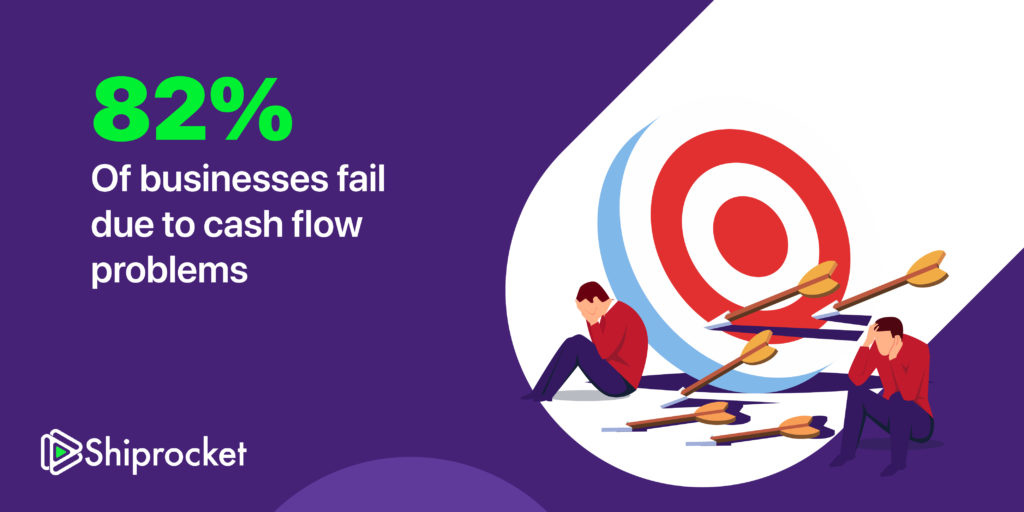7 Actionable Tips to Maintain Cash Flow During Crisis
According to Business Insider, 82% of businesses fail due to cash flow problems. A cash flow shortage happens when more money is flowing out of a business than is flowing into the business. That means, during a cash flow shortage, you might not have enough money to cover payroll or other operating expenses.

When business leaders have no strategy or plan to handle a cash flow shortage, a cash flow crisis occurs. In the event of a cash flow crisis, you need to be ready to take action to save your business from an untimely demise.
Take These 7 Steps In The Event Of A Cash Flow Crisis

Adjust Your Business Plan to Improve Profit Margins
Encountering a cash flow shortage should lead you to closely inspect your business plan, processes, operations, and expenses. You need to determine why you experienced a cash flow shortage, whether it will be a recurring problem, and you will also need to put a plan in place to handle future shortages.
Use job costing to look at your business’s profit and loss statements and profit margins based on individual categories within your company (jobs, clients, employees, events, marketing strategies, products, and services) to determine which areas of your business are the most and least profitable. This will help you adjust your business plan to focus on services that generate the most profit, let go of clients who might be costing you more money than you realize, optimize your pricing structure and also identify areas of waste or unnecessary expense to remove from your operations.
Accelerate Your Receivables
Take a page out of Tesla’s cash-flow-crisis-playbook and speed up your receivables. The quicker money begins flowing into your business, the sooner your cash flow problems will be solved. Tesla sped up their receivables by offering and accepting pre-orders for a product before it hit production, but you can use other strategies to accelerate receivables:
- Ask new customers for a deposit or partial payment up-front, rather than billing the entire amount due in a single invoice after services have been rendered or products have been delivered.
- Start sending your invoices early. Adjust the management of your receivables to invoice clients immediately following the delivery of products or services, rather than sending out all invoices on a particular day of the month. The sooner you send an invoice, the sooner you will receive payment.
- Send invoices more frequently. Instead of waiting for the full completion of a job to send an invoice, generate invoices every week or every two weeks to cover the services delivered up to that point.
- Focus on your past due accounts. Scour your stores receivable for past due to clients and start making phone calls. You can ask past due clients for partial payments; in a cash flow crisis, every cent counts.
- Make it convenient for clients to pay by offering additional payment methods, such as credit card or mobile and electronic payment options.

Negotiate Your Payables
If you can delay or reduce the amount of cash flowing out of your company during a cash flow crisis, it will help reduce your working capital strain. Be honest with your vendors to negotiate payments or to inquire about delaying payments. Although some might be unwilling to budge, the odds are vendors to whom you have been loyal will be flexible and willing to work with you during a tight situation. You will also likely be able to get some leeway or perhaps even a reduced obligation from your utility providers.
Consider Borrowing Options
Cash flow shortages occur when more money flows out of your company than into your company. One way to solve the problem is to find a way to bring money into the business. You can do this with a business loan or a credit card advance. However, before you take on business debt, be sure you understand the interest rates, consider all other options and are not making a decision that will simply kick the problem down the road to be addressed later.
If your business has an inherent problem causing your cash flow crisis, then taking on debt will only put a band-aid on the issue and make the situation worse in the future.
Raise Investor Capital
Another way to quickly increase your business’s working capital (and bring in a new business partner) is to sell equity. However, like taking on debt, be sure you genuinely want or need to sell a piece of ownership in your business to solve a cash flow crisis. Also, be careful regarding the type of investors to whom you decide to sell and choose to partner. Do not let the pressure of a cash flow crisis lead you to make poor decisions for your business’s future.
Slash Expenses
As a rule of thumb in business, you should constantly scrutinize every single penny that leaves your bank account, but you will need to be especially critical of spending during a cash flow crisis. During a cash flow shortage, you must prioritize your company’s expenses. Eliminate all unnecessary expenses and only spend on the costs that keep you operational and generate revenue.
Sell Non-Essential Assets
In addition to cutting non-essential expenses, you can also off-load non-essential business assets in a cash flow crisis. Although this is a temporary fix, as you can only sell an unnecessary item once, it is an effective and quick way to raise some cash when you are in a bind.







